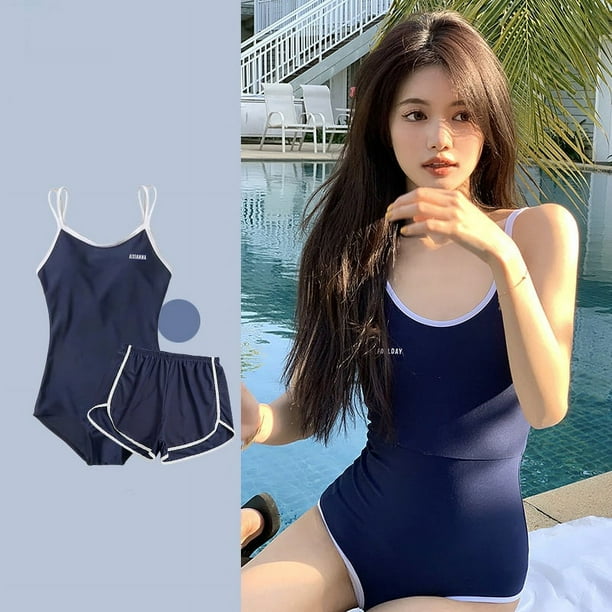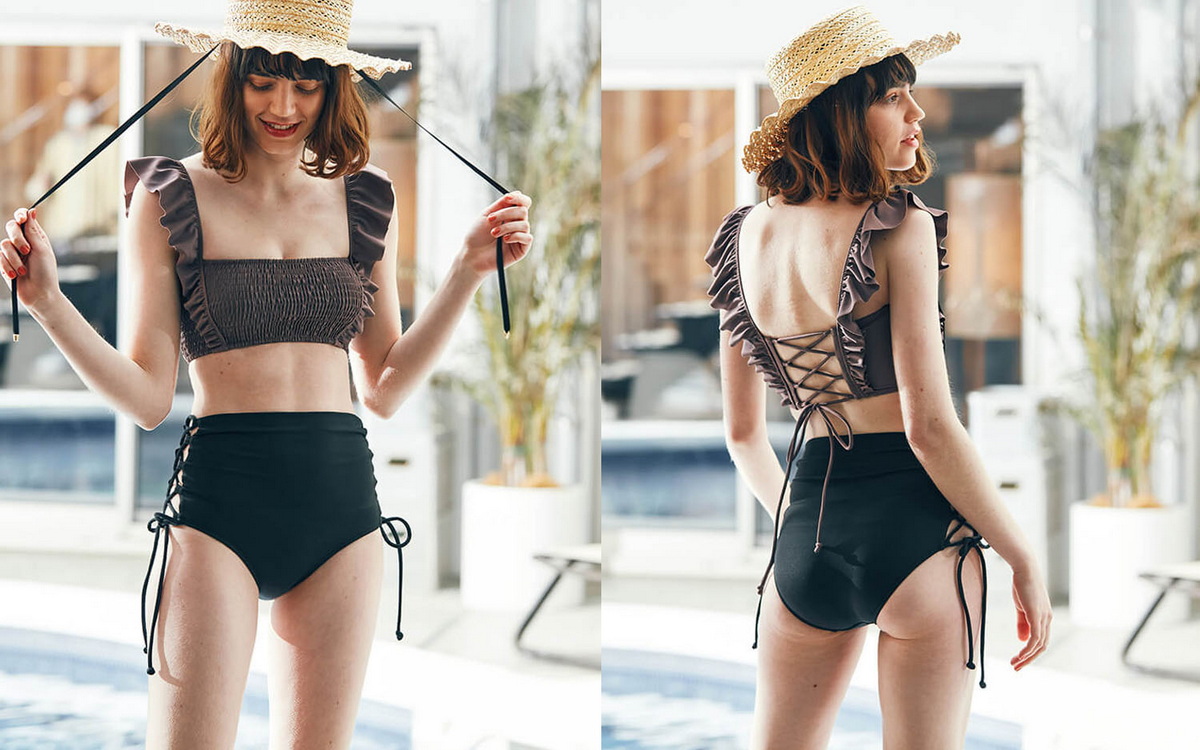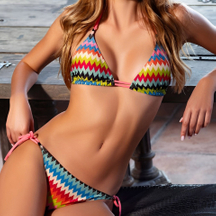Content Menu
● Cultural Influences on Swimwear Design
● Popular Swimwear Styles
● Swimwear for Different Activities
● Shopping for Swimwear in Japan
● Trends in Japanese Swimwear
● Swimwear Etiquette in Japan
● Conclusion
● Frequently Asked Questions
>> 1. What types of swimsuits are popular among Japanese women?
>> 2. Is it acceptable to wear a bikini at Japanese beaches?
>> 3. Are there gender-neutral swimsuit options available?
>> 4. What should I consider when shopping for swimwear in Japan?
>> 5. Do I need a swimsuit for an onsen?
● Citations:
Japan, an island nation known for its rich culture and stunning landscapes, also boasts a unique swimwear scene that reflects its traditions and modern trends. With a diverse range of styles, materials, and cultural influences, swimwear in Japan is as much about fashion as it is about functionality. This article delves into the various aspects of swimwear in Japan, including popular styles, cultural considerations, shopping options, and the evolving trends that define this vibrant market.

Cultural Influences on Swimwear Design
Japanese swimwear is influenced by a blend of traditional aesthetics and contemporary fashion trends. The concept of *kawaii* (cute) plays a significant role in the design of women's swimwear. Many swimsuits feature playful elements such as ruffles, bows, and vibrant colors that appeal to younger demographics.
- Traditional Elements: Some swimwear designs incorporate traditional Japanese motifs or fabrics, reflecting the country's heritage.
- Modern Trends: The influence of Western fashion is evident in the adoption of styles like bikinis and one-piece swimsuits, but with a unique Japanese twist.
Popular Swimwear Styles
Swimwear in Japan can be categorized into several key styles that cater to different preferences and occasions:
- Bikinis: While bikinis are popular, they are often designed with more coverage compared to Western counterparts. High-waisted bottoms and tankini tops are common choices.
- One-Piece Suits: These are favored for their modesty and comfort. Many one-piece designs include intricate patterns and stylish cutouts.
- Rash Guards: Due to the strong sun and cultural emphasis on skin protection, rash guards are commonly worn by both men and women.
- Genderless Swimwear: Recent trends have seen the introduction of gender-neutral swimwear options in schools, promoting inclusivity among students[2].
Video: Japan 90's Swimsuit Women Fashion Show
Swimwear for Different Activities
In Japan, swimwear is not only used for leisure at the beach but also for various activities:
- Beach Swimming: Popular beaches like those in Okinawa see a wide variety of swimwear styles, from casual shorts to fashionable bikinis.
- Competitive Swimming: Competitive swimmers often wear streamlined suits designed for performance. These suits are typically less colorful but focus on functionality.
- Onsen Visits: While traditional onsens (hot springs) usually do not require swimsuits, some facilities offer designated areas where swimwear is permitted[6].
Shopping for Swimwear in Japan
Shopping for swimwear in Japan can be an exciting experience due to the variety of options available:
- Local Brands: Brands like *Peak&Pine* and *San-ai Resort* offer unique designs that reflect local fashion trends. Prices generally range from ¥7,000 to ¥17,000[8].
- International Brands: Global brands such as H&M and Roxy are also popular in Japan, providing affordable options alongside high-quality choices.
- Online Shopping: E-commerce platforms like Zozotown allow shoppers to browse a wide selection of swimwear from various brands conveniently[8].

Trends in Japanese Swimwear
The Japanese swimwear market is continuously evolving with new trends emerging each season:
- Sustainable Fashion: There is a growing trend towards eco-friendly materials and sustainable production practices within the swimwear industry.
- Athleisure Influence: The rise of athleisure has led to more functional swimwear that can transition from beach to workout seamlessly.
- Fashion Shows: Events like the annual Tokyo Swim Week showcase innovative designs and highlight emerging trends in swim fashion[4].
Swimwear Etiquette in Japan
When wearing swimwear in Japan, there are certain cultural norms to consider:
- Modesty: While beach attire can be more revealing than everyday clothing, there remains an emphasis on modesty compared to Western standards.
- Public Spaces: Bikinis are generally acceptable at beaches or pools but may be frowned upon in more conservative public spaces or when not at designated swimming areas[5].
Conclusion
Japanese swimwear reflects a fascinating blend of tradition and modernity. With its unique styles catering to various tastes and activities, it continues to evolve while maintaining cultural significance. Whether you're lounging on the beaches of Okinawa or participating in competitive swimming events, understanding the nuances of Japanese swimwear can enhance your experience in this beautiful country.

Frequently Asked Questions
1. What types of swimsuits are popular among Japanese women?
- Popular styles include one-pieces with floral patterns and bikinis with high-waisted bottoms.
2. Is it acceptable to wear a bikini at Japanese beaches?
- Yes, bikinis are acceptable at beaches but may be less common in public swimming pools or onsens.
3. Are there gender-neutral swimsuit options available?
- Yes, some schools have introduced genderless swimsuits designed for inclusivity[2].
4. What should I consider when shopping for swimwear in Japan?
- Consider local brands for unique styles and check sizing as many stores have limited options.
5. Do I need a swimsuit for an onsen?
- Generally no; however, some onsens may allow or require swimsuits depending on their policies[6].
Citations:
[1] https://hyperjapan.co.uk/traditional-culture/japanese-beach-styles-to-keep-you-cool-comfortable-and-looking-good-this-summer/
[2] https://japantoday.com/category/national/3-Japanese-schools-to-introduce-genderless-swimsuits-with-unisex-two-piece-design
[3] https://www.gettyimages.co.jp/%E5%86%99%E7%9C%9F/japanese-swimsuit-model
[4] https://www.youtube.com/watch?v=m1wtSd69J1Y
[5] https://www.japan-guide.com/forum/quereadisplay.html
[6] https://www.japanfortwo.travel/onsen-etiquette-do-you-need-a-swimsuit/
[7] https://blog.myswimpro.com/2018/02/21/what-its-like-to-swim-in-japan/
[8] https://savvytokyo.com/swimwear-shopping-tokyo/




































